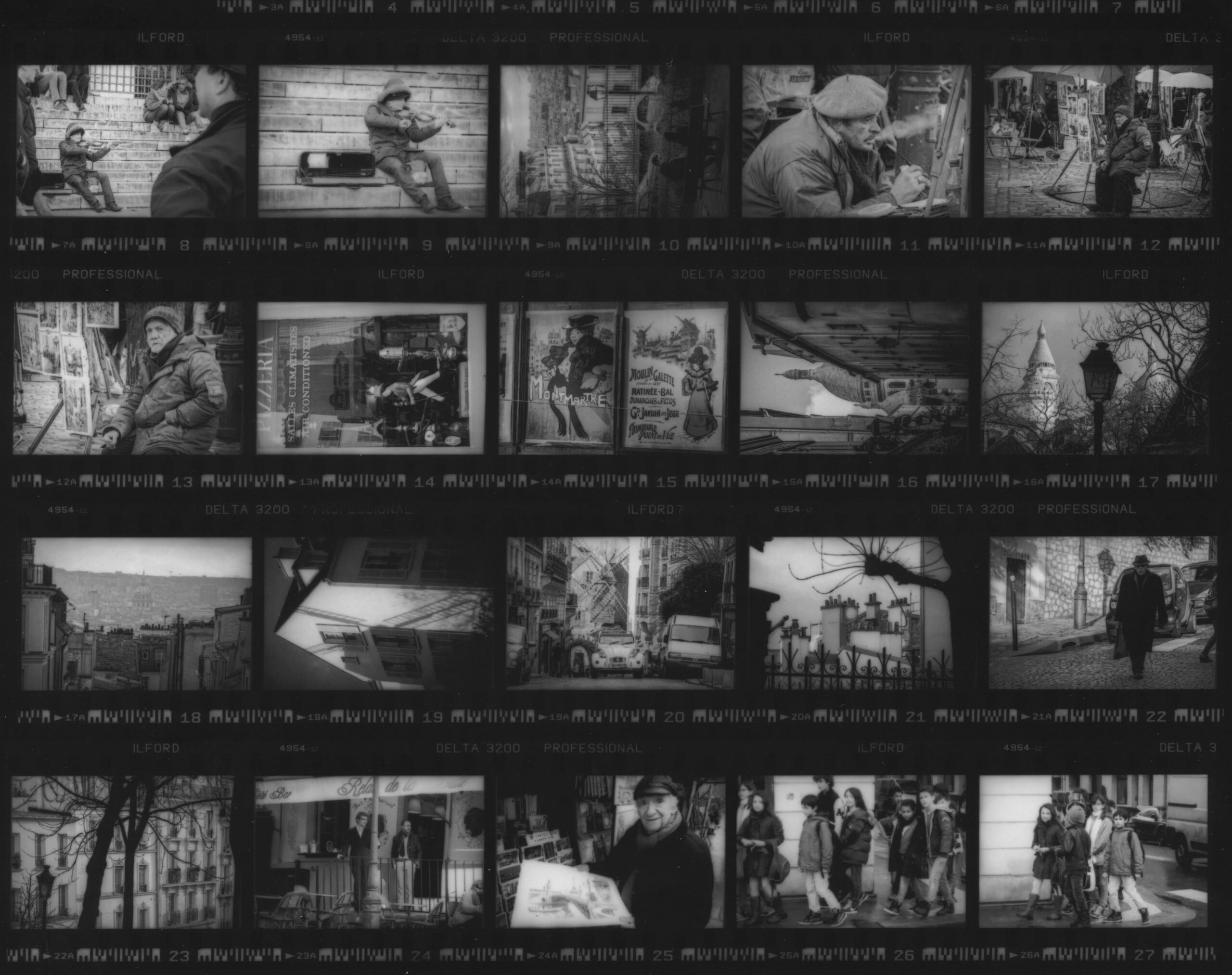
In January of 2013 I spent eight days in Paris. I wandered the streets of Paris and did my best to conjure up the spirit of Henri Cartier-Bresson and the French Humanist photographers that inspire me.
Unfortunately I had short notice of the opportunity to go and I did not have enough B&W film to take with me so I settled for borrowing a point and shoot digital camera from my mother.
I enjoyed my time photographing in Paris immensely. I particularly have fond memories of wandering around Basilique du Sacré-Cœur and the artist market in Montmartre. I also loved visiting the vendors along the Seine river.
It was only after I returned that I discovered to my horror that I had not recorded the images in high resolution. All of my images were extremely small jpeg files!
I had some medium format negatives I made at Notre Dame cathedral but when it came to everyday street scenes I found myself favoring the small point and shoot camera that let me work quickly. Some of my best images were actually taken on an iPhone.
While I did make a few darkroom prints of gargoyles and aerial views of the city from the Cathedral, My best images by far were the street photographs I had made digitally. Unfortunately they all had a distinctive pixel quality to them that I felt just didn’t do the essence of Paris justice… until now.

During winter break I was doing a lot of preparation for my upcoming classes. For my advanced digital photography course I was reviewing computer hardware specs and putting together a lecture about optimum image quality on a screen. As I looked at the 5K retina monitors with a 1100:1 contrast range I thought about how these monitors actually held more resolving power than 35mm film. When I logged into an iMac with a retina display I realized that we were not using the highest resolution possible. The image quality of the 5k monitor was sensational and the brightness range was equivalent to a 10 stop exposure range. Knowing that photographic paper can only hold 7 stops of information I had an idea that I might find some satisfaction in photographing my Paris street photographs on ISO 3200 film.

My hypothesis was that the grain structure of the film would mask the pixel structure of the digital image that I found so displeasing. Like a faded memory I was attempting to translate the digital images into a historical film image and remove unnecessary details that seemed to kill the joie de vivre.
One of the unexpected benefits of this process is that I got to re-explore the scene with my 35mm camera. I could recompose each image in the camera and fill the frame with as much or as little of the original image as I wanted to. I photographed these screen images using my Nikon F100 with a 105 micro lens. I used Ilford 3200 ISO film.
This is but my first test roll of film but so far I am optimistic that I will finally have a photographic record that aligns with my memories of my time there. There is something of a less is more quality that I find pleasing as I review the early results on my contact sheet that I made in the darkroom today.
I think film translates the essence of a place so effectively that it is worth revisiting the original image capture with my closeup lens on film. I have a lot to learn yet, and I will make some subtle changes to the next experiment but I see that the ideas I am developing are building momentum. I don’t think I would have tried this if I had not also recently made prints from ISO 3200 Tmax Film of the Buddha statue. There was something about that image that resonated deeply with me and I am feeling a similar resonance with these Paris images.
I look forward to seeing where this project takes me.

